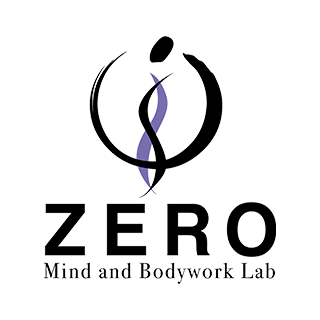Introduction
Hello, My name is Hidefumi Otsuka and I am providing Rolfing session in Shibuya, Tokyo.

How can we support the process of human transformation? – Insights from Rolfing and Coaching
Rolfing and coaching—at first glance, these seem like entirely different domains of practice.
Rolfing works through the body, coaching works through language.
But at the heart of both lies the same essential question:
“How can we support the process of human transformation?”
I studied Co-Active Coaching through CTI (The Coaches Training Institute) in 2009. As I pursued the skills of coaching more deeply, I eventually encountered Rolfing. These two approaches may appear to be fundamentally different.
And yet, what they have in common is that they both deal with the shared theme of transformation.
In this series, I aim to explore Rolfing and coaching from the following seven perspectives:
Part 1: Neutral and Presence
Part 2: The Four Cornerstones
Part 3: The Three Principles and the Rolfing Ten Series
Part 4: The Process Between Sessions
Part 5: The Quality of Relationship (Designed Alliance / Right Relationship)
Part 6: Skills Compared (CTI’s Five Skills and Rolfing Techniques)
Part 7: Conclusion
Throughout this series, I want to reflect on transformation from multiple angles: touching, questioning, listening, and being.
By comparing Rolfing—which engages the body—and coaching—which touches the inner world through language—I hope to invite reflection on the nature of human transformation.
On Transformation and Relationship
Transformation depends not only on “what we do” but also on “who we are with, and how.”
Both Co-Active Coaching and Rolfing share the view that the quality of relationship itself is a form of intervention when supporting transformation.
In Part 5, I compare:
- CTI’s “Designed Alliance”
- Rolfing’s notion of “Right Relationship”
to explore the role of relationship in transformational space.
What Is CTI’s Designed Alliance?
In Co-Active Coaching (4th ed.), every session begins with creating a Designed Alliance.
This is not merely about agreement—it is a conscious process of designing the kind of relationship we want to be in.
“The Designed Alliance is a consciously created relationship where power is shared and responsibility is mutual.”
— Co-Active Coaching, p. 92
Key points:
- Emphasis is placed on co-creating the space of the session with the client
- Coach and client are equal partners
- “Safety, challenge, trust, and responsibility” are explicitly shared
- The structure of relationship helps the client deepen self-trust
Keywords: co-creation, explicit agreement, mutual responsibility, designed space
For example, if a client says they want to be “challenged” or “held in a safe space,” the coach will acknowledge that at the start and shape the session accordingly.
By making the relationship itself a visible “contract,” deeper inquiry becomes possible.
What Is Right Relationship in Rolfing?
In Rolfing, the concept of “relationship” is rarely defined explicitly, but the act of giving a session itself reflects the quality of the relationship.
Jeff Maitland puts it this way:
“Right relationship is not about being detached. It is being open and present without control.”
— Embodied Being, p. 126
Key points:
- The Rolfer is not a “guide” but a holder of the space where change can occur
- What’s required is not manipulation or control, but open presence
- The practitioner engages in deep listening and “dialogue” with the client’s body
- The relationship supports what wants to emerge, rather than making something happen
Keywords: non-manipulative, open being, somatic resonance, co-presence and trust
In my own Rolfing practice in Shibuya, I start each session by asking, “How is your body feeling today?”
From there, the session is co-created through that response. While not a formal contract, it could be seen as a somatic agreement through presence and mutual attention.
Comparison: Explicit Agreement vs. Silent Companionship
Though their methods and expressions differ, both CTI and Rolfing share a foundation: the co-creation of space with the client.
In coaching, this is done explicitly through conversation; in Rolfing, it is shaped through touch and attitude.
Both approaches build a field of trust, safety, and potential for deep transformation.
Below is a comparison of how each defines and holds relationship as part of their transformational work:
| Aspect | CTI (Coaching) | Rolfing (Bodywork) |
|---|---|---|
| Formation of Relationship | Explicitly designed at session start | Expressed nonverbally through quality of touch |
| Distribution of Agency | Coach and client are equal co-creators | Rolfer holds space as a supportive presence |
| Control vs. Receptivity | Shared power and mutual responsibility | Non-manipulative, receptive, resonant relationship |
| Shared Purpose | Designing change and session success together | Opening space for emergent change |
Session Structure: Designing Transformation, Exploring the Present, Bridging the Future
Change doesn’t occur by accident—it is supported by intentional structure and process.
Both in CTI’s coaching model and Rolfing’s physical sequence, there is a flow that supports transformation.
Let’s now compare their respective frameworks for how change is clarified, explored, and integrated into the future.
CTI: Design → Explore → Forward
According to Co-Active Coaching (4th ed.), effective sessions follow three phases (pp. 107–111):
| Phase | Description |
|---|---|
| Design | Co-create the focus and intention of the session |
| Explore | Deepen into the client’s emotional, somatic, and cognitive experience |
| Forward | Identify insights and turn them into actions or next steps |
This structure maps the flow of a transformational conversation as intention → exploration → integration/action.
Rolfing: SLEEVE (1–3) → CORE (4–7) → INTEGRATION (8–10)
Rolfing’s Ten Series is structured as follows:
| Phase | Main Purpose |
|---|---|
| Initial (1–3) | Recovery of breath, grounding, and body boundaries (Sleeve) |
| Middle (4–7) | Reorganization around vertical core and inner orientation (Core) |
| Integration (8–10) | Whole-body balance, spatial integration, and fluid movement (Integration) |
CTI vs. Rolfing Session Structures
Here is a practical comparison of CTI and Rolfing session frameworks.
Despite using different tools—language and touch, intention and structure—both share remarkable commonalities.
| CTI Structure | Rolfing Structure | Shared Theme |
|---|---|---|
| Design (Setting Intention) | Sessions 1–3 (Sleeve) | Restore breath, grounding, and spatial awareness |
| Explore (Deep Inquiry) | Sessions 4–7 (Core) | Engage and reorganize deep structures |
| Forward (Action/Movement) | Sessions 8–10 (Integration) | Integration, freedom of movement, and stabilization |
Both approaches deeply engage with “what is present now” and open a pathway toward future transformation.
Summary: Change is Supported by Structure and Relationship
Though different in method, both CTI and Rolfing are grounded in the same core principles:
- Change is not forced—it emerges naturally
- When intention and structure are aligned, people move forward
- Transformation is supported by a well-held space and co-created relationship
“Coaching is not about solving problems; it’s about creating a space where transformation can occur.”
— Co-Active Coaching (4th ed.), p. 110
I hope this post can serve as a useful reference for anyone exploring transformation through body, mind, or relationship.
References
- Henry Kimsey-House et al. (2018). Co-Active Coaching: The Proven Framework for Transformative Conversations at Work and in Life (4th ed.). Nicholas Brealey.
- Jeff Maitland (2017). Embodied Being: The Philosophy and Practice of Manual Therapy. North Atlantic Books.
- Dr. Ida Rolf (1977). Rolfing: Reestablishing the Natural Alignment and Structural Integration of the Human Body for Vitality and Well-Being. Healing Arts Press.

